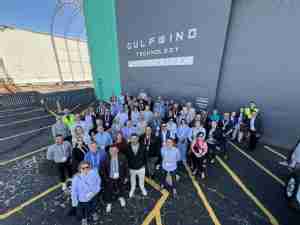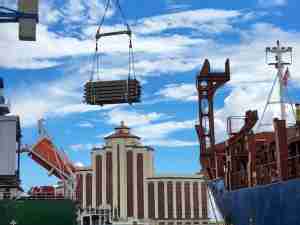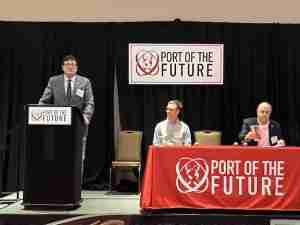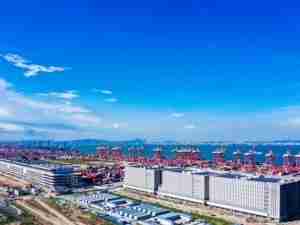The latest headache at Latin America’s largest port: dredging
By: Reuters | Jun 10 2014 at 07:58 PM | Ports & Terminals
Brazil is struggling to keep the ship channel running through Latin America’s largest port deep enough.
Dredging problems at the Port of Santos are preventing modern container ships from docking at some terminals, and Soybean cargoes leaving the world’s top soy exporter must either leave partly full or wait until high tide to sail.
The stakes are high. About a quarter of Brazil’s exports move through Santos and Sao Paulo, the country’s most industrialized state, depends on the port for raw materials.
President Dilma Rousseff’s government is hoping to improve Brazil’s port efficiency with private investment but has not yet managed to award concessions to operate terminals or sign a new contract to dredge Santos.
Despite years of warnings and promises of government action, dredging has failed to keep up with surging port traffic over the past decade. Shallow channels and outdated docks have limited the use of a new generation of larger, more-efficient ships, allowing high transport costs to limit economic growth.
“The biggest ships aren’t able to enter, or at least they aren’t able to use their full capacity,” said Paulo Barbosa, a harbor pilot who has guided ships into Santos for 20 years.
For exporters of soybeans and corn, the problem is most severe when ships dock, according to vegetable oils association Abiove, which represents agribusiness giants like Cargill and Bunge.
Daniel Furlan, an economist for Abiove, calculated that the problem results in a 15 percent reduction in productivity at Santos and said it is a frequent complaint of Abiove’s members.
“Fully loaded ships are only able to leave when the tide is high… so that leaves ship loaders idle and prevents the next vessel in the line-up from loading,” he told Reuters.
The other option, favored from February to May when grains exports are highest, is to let ships leave port less than fully loaded to prevent expensive delays, Furlan said. Some ships have been forced to anchor off Santos, Brazil’s main soy exporting port, for up to two months before being allowed to dock.
PROMISES OF BETTER DREDGING
The government promised to improve port dredging around a decade ago and launched a national dredging program in 2007. But lots of work remains.
Private port operators EcoPorto and BTP Brasil, a joint-venture between Terminal Investment Limited and APM Terminals, have been forced to pick up the government slack. They have spent 6 million reais ($2.67 million) on dredging, a BTP spokeswoman said.
Both terminals are located in section 4 of Santos, the shallowest part of the port.
A consortium called Dragagem Brasil had a concession to dredge Santos, but it expired last year. Dragagem Brasil was unable to meet a contractual obligation to maintain a channel depth of 15 meters.
In January, Santos had to reduce the draft, or maximum depth of a ship’s hull beneath the water, to 12.3 meters from 13.2 meters. In section 4, the draft is 11.2 meters.
Codesp hired Brazil DTA Engenharia in April for emergency dredging and was able to lower the draft in most areas to 12.7 meters.
Most recently, dredging started at a pier by Cargill’s TEG terminal on Monday but was scheduled so as not to affect operations, authorities said.
An auction for rights to dredge Santos took place in April, but the government did not accept any of the bids. Another was scheduled for June 6 but has been delayed until June 27.
U.S. dredgers may get in on the act. U.S. Secretary of Transportation Anthony Foxx told Reuters that Brazilian officials want help from U.S. and other foreign companies to perform $1.5 billion of port improvements.










